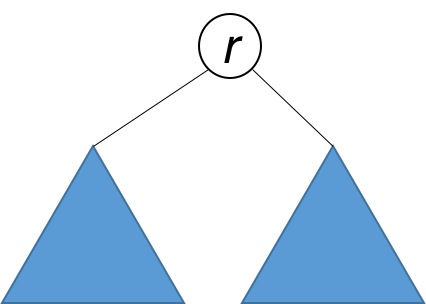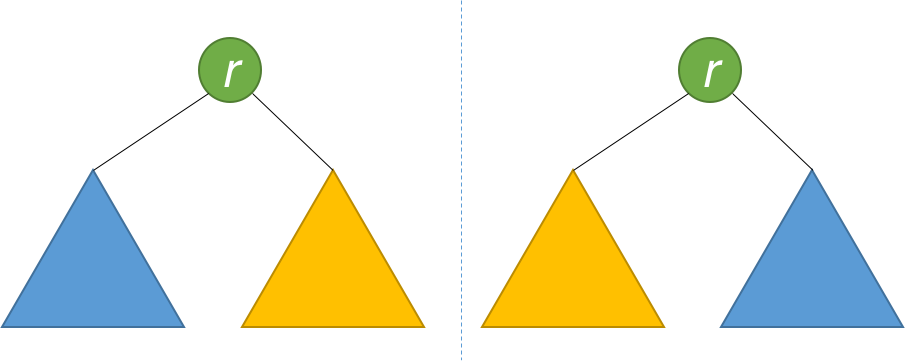Given a binary tree, check whether it is a mirror of itself (ie, symmetric around its center).
For example, this binary tree [1,2,2,3,4,4,3] is symmetric:
1 / \ 2 2 / \ / \ 3 4 4 3
But the following [1,2,2,null,3,null,3] is not:
1 / \ 2 2 \ \ 3 3
Note:
Bonus points if you could solve it both recursively and iteratively.
public boolean isSymmetric(TreeNode root) {
if(root==null){
return true;
}
return isSymmetric(root.left, root.right);
}
public boolean isSymmetric(TreeNode left,TreeNode right){
if(left==null&&right==null){
return true;
}
if(left==null||right==null){
return false;
}
if(left.val==right.val){
return isSymmetric(left.left,right.right)&&isSymmetric(left.right,right.left);
}
return false;
}Solution
Approach #1 (Recursive) [Accepted]
A tree is symmetric if the left subtree is a mirror reflection of the right subtree.

Therefore, the question is: when are two trees a mirror reflection of each other?
Two trees are a mirror reflection of each other if:
- Their two roots have the same value.
- The right subtree of each tree is a mirror reflection of the left subtree of the other tree.

Java
public boolean isSymmetric(TreeNode root) { return isMirror(root, root); } public boolean isMirror(TreeNode t1, TreeNode t2) { if (t1 == null && t2 == null) return true; if (t1 == null || t2 == null) return false; return (t1.val == t2.val) && isMirror(t1.right, t2.left) && isMirror(t1.left, t2.right); }
Complexity Analysis
Because we traverse the entire input tree once, the total run time is O(n), where n is the total number of nodes in the tree.
The number of recursive calls is bound by the height of the tree. In the worst case, the tree is linear and the height is in O(n). Therefore, space complexity due to recursive calls on the stack is O(n) in the worst case.
Approach #2 (Iterative) [Accepted]
The algorithm works similarly to BFS, with some key differences. Each time, two nodes are extracted and their values compared. Then, the right and left children of the two nodes are inserted in the queue in opposite(对立的) order.
Java
public boolean isSymmetric(TreeNode root) { Queue<TreeNode> q = new LinkedList<>(); q.add(root); q.add(root); while (!q.isEmpty()) { TreeNode t1 = q.poll(); TreeNode t2 = q.poll(); if (t1 == null && t2 == null) continue; if (t1 == null || t2 == null) return false; if (t1.val != t2.val) return false; q.add(t1.left); q.add(t2.right); q.add(t1.right); q.add(t2.left); } return true; }
Complexity Analysis
Because we traverse the entire input tree once, the total run time is O(n), where n is the total number of nodes in the tree.
There is additional space required for the search queue. In the worst case, we have to insert O(n) nodes in the queue. Therefore, space complexity is O(n).
























 551
551

 被折叠的 条评论
为什么被折叠?
被折叠的 条评论
为什么被折叠?








